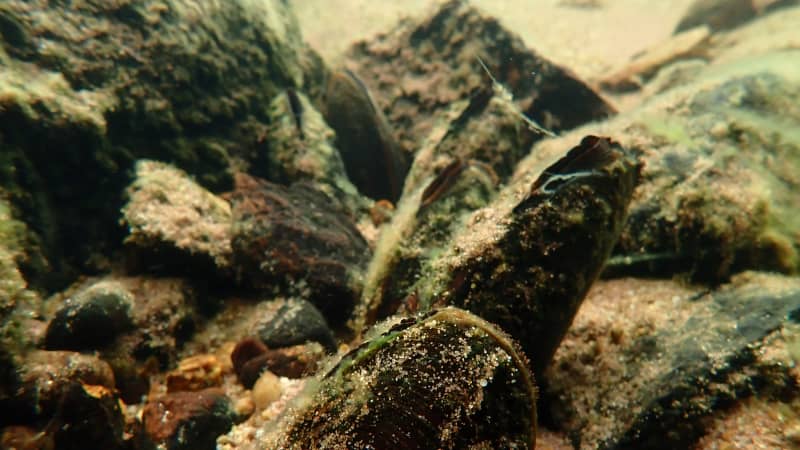Last year, the laboratory-raised wrasse fry were returned to their home river, and they survived the winter. If the chicks survive to adulthood, the researchers have plenty of time to restore natural reproduction.
Microscopically small river pearl mussel chicks find a temporary home in the middle of the gravel and stones at the bottom of the plastic box.
A year ago, raw chicks grown in laboratory conditions were brought to Luttojoki. Luttojoki raakku is a very endangered species, and now their young have survived their first year of life in their home river.
Before the raccoon chicks get to live in natural waters, their growth and life are monitored in plastic boxes.
– From now on, the chicks’ growth will be monitored for a few years. The hope is that growth will take place, and in a few years the chicks will be released here at the bottom of the river, says Salonen.
A new type of research to revive the raw stock
Luttojoki raccoons have not been able to reproduce naturally for decades, even though the species has been protected for almost 70 years.
In the fall of 2020, larvae of clocids were collected from Luttojoe to be grown for the Konnevesi research institute. Raakku needs salmon to reproduce, which have not come up to the Luttojoki for decades after Russia dammed the Luttojoki.
After a year in the laboratory, thousands of raw chicks were planted in Luttojoki a year ago. The future looks better all the time and more chicks are brought to the home river for further rearing.
Similar work to save the dead is also done elsewhere in Northern Europe. The goal of the LIFE Revives project, funded by the European Commission, is to improve the habitats of raw host fish in Finland, Sweden and Estonia.
The six-year project is coordinated by the University of Jyväskylä, which in the project is responsible for the artificial breeding of the raccoon and the planting of the raccoon chicks in eight Finnish rivers, in the Lapland region Lutto, Suomujokki and Simojoki.
Time will tell how the northern stock will fare. However, scientists believe that after the raw chicks grow up, they will live in natural conditions for hundreds of years more.

